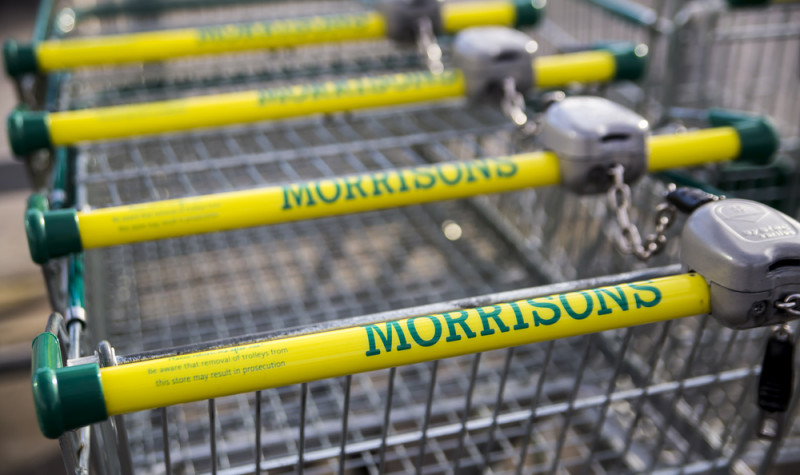Morrisons: Leaner and meaner after turnaround

Wm. Morrison was a buy! You heard that message here last month ahead of these first-half results, and in the face of a massive uncovered bear position. (Clearly, too many hedge fund managers shop at Harrods and not Morrisons!) The grocer has managed to keep its customers happy, and the share price has responded in kind. At last, a UK supermarket you can believe in.
When I declared my conviction last August that Morrisons was on the right track, the share price was 192p. Today, after the half-year results, the share price is (last seen) 216p. That is a spectacular monthly increase of more than one eighth. You would be forgiven for thinking that this was a growth stock, not a struggling supermarket retailer in a life-and-death battle with discounters and others for market share.
So one asks the question: “Where have they gone right?”
The Q2 and H1 results
In follow-up to the theories I promulgated in my August note I now recite the facts from the company results themselves.
First, Morrisons not only improved top line sales revenue in the second quarter (excluding fuel sales and VAT) by 2 per cent, they did so for the third consecutive quarter! That is a good pattern after a year or two of difficulty.
On the back of that, the company turned in an 11 percent improvement in underlying profit before tax and a 35 per cent increase in underlying earnings per share, which was a little less than the 13 per cent increase in statutory profits before tax.
A more efficient use of capital whilst cutting costs and debt
Management also secured its stated intention to work its capital more economically by significantly reducing its level over two years. Net debt was also reported to have been reduced by some 37 per cent over two years, notably below the target set for such a reduction. As a result, the interim dividend was raised 5.3 per cent to 1.58p. All this is gratifying, if not thrilling, stuff from a company in an industry under the cosh of fierce competitive price deflation.
More to come
We are also informed that this is a process of continuing dynamics because cost savings will now exceed the £1 billion target set for this year. In an itinerary of attractive improvements we are told to expect £2 billion of free cash flow six months in advance of the previously stated target and further improvement in net debt – which is expected to have more than halved by next year. It is indeed an almost astounding contrast from what we might have expected from a business where lowering prices (or ‘investment in customers’, as we now call it) has been an unavoidable necessity. It seems that Wm. Morrison can do both.
A differentiated business model
There are two things about the Morisons business model that need to be taken on board. First, it is one of the country’s largest meat and fish manufacturers (an odd way of referring to a natural process, I know). Its large farming business is an integrated part of the group, and that seems to have enabled the company to respond quickly to changing circumstances. As does the fact that it owns four fifths of its retail premises.
Vertical integration of this kind does not always work to a company’s advantage; but in this situation it has. Morrisons is strong on control and assets in comparison with many of its competitors. It is this aspect of the business which has also enabled it to sign partnerships with the likes of Amazon which will add to its bottom line in due course.
It is also emphasised that Morrisons is gaining advantage from not being as advanced in the diversity of its activities. It is thus an odd devaluation Brexit beneficiary, simply because it does not supply all those imported, and now more costly, non-food items.
That of course did not prevent the company from adding that it had experienced no discernible change in trading post Brexit (that is likely to come this winter as rising sterling import costs bite).
Conclusion about value
The consensus estimate is for a massive 34 per cent increase in earnings per share this year and 9 per cent next year. Given that the shares are now selling at over twenty times this year’s estimated earnings of 10.4p, Morrisons remains nominally good value, with estimated earnings growth exceeding the multiple number by some way. However, that is not forecast to continue into next year, which could begin a more difficult time for consumers’ real spending power in the UK.
Hang on and watch for a profit taking price as short sellers scramble for stock. The share will probably have relative attractions for institutional funds meanwhile. My view is to take a near 15 per cent six-week profit when the scramble pushes the share price above 220p.
Comments (0)